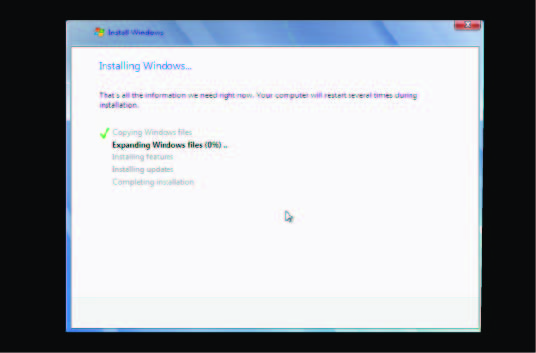Installing new Windows on your laptop or computer may seem daunting. Still, the process is actually pretty simple if you understand it. Go through this guide and how to download and install the latest Windows.
The best operating system for any computer or PC is Windows 10. If you are still running your laptop on the outdated Windows 8 or 7 versions, it is high time you upgrade it. With higher possibilities of Windows 11 rolling out, you should also evolve with time. The thing is different for Mac users, though.
Upgrading from the previous versions of Windows OS takes longer than installing a new Windows to the laptop. But you know that your computer is compatible with the latest Windows upgrade.
When upgrading your laptop to the latest Windows, you do not need extra time to set up the device. All the device’s settings, data, and programs will be already in place. Windows 10, with its unique features like mouse-friendly modes, UI touch, Startup menu, and Cortana digital assistant, has a lot of new improvements.
Anyhow, if you are upgrading your computer, keeping a backup of all the data and files is always safe. If the laptop crashes during a Windows upgrade, you will lose everything. If a system restores disk is not available, create a full system backup through some disk imaging software.
When you start the Windows Installation process, you should have a few hours of free time and fast internet connectivity. There are a few ways to follow up with the latest Windows (Windows 10) installation on your computer or laptop. So, let’s get on with it.
New Windows upgrade from older version via direct download and installation
After verifying that your computer is suitable to upgrade to the latest Windows, you can directly download and install Windows 10 on your PC. Here’s how the process goes.
- Go to “https://www.microsoft.com/en-us/software-download/windows10”. Click on the link to download the latest Windows 10.
- Find and click the “Download Tool now” button as the link opens.
- As the download completes, launch the Tool.
- On the “Windows 10 Setup” page, choose the “Upgrade this PC now” option. This option applies if you are installing Windows on the same laptop.
However, suppose you want to install the latest Windows on another laptop via DVD media or a USB. In that case, you have to click on the next option, “Create installation media for another PC.” You will need a blank disc or a Flash drive. You can use this on your current computer as well.
- As the agreement for License Terms appears, hit the “Accept” button.
- Since upgrading your device to a new Windows, you want to keep all the program files and data. You must select the “Keep personal files and apps” option on the ‘Ready to Install” page.
- Now, hit the “Install” button at the bottom of the tab. That will begin copying everything on the computer. After that, the device will reboot multiple times.
- When your laptop starts up, click on the “Next” button at the bottom of the screen.
- The next screen will be where you can choose to make changes in the Settings or not. If yes, click on the “Use Express Settings” button.
- On the next screen for “New apps for the new Windows,” hit the “Next” button. That will take you to a new screen to finalize your settings for the new Windows.
- Finally, the Windows 10 lock screen will appear. Log in to the laptop and wait for the setup to complete.
Steps to create a USB Install disk for the latest Windows 10
First, you will have a USB flash drive of 4GB or more. A blank DVD or optical drive will also work. This method enables Windows installation on multiple computers via a single USB Install disk. That way, waiting hours for the latest Windows 10 to download is no longer necessary.
To start the process, plug the USB Flash drive into your computer. Make sure that the drive is empty.
- Go to “https://www.microsoft.com/en-us/software-download/windows10”. Click on the link to download the latest Windows 10.
- Find and click the “Download Tool now” button as the link opens.
- As the download completes, launch the Tool.
- On the screen for Windows 10 Setup, select the “Create Installation media for another PC” option.
- Next, as available, set the Language, Edition, and Architecture for the Windows.
- On the next screen, select the type of external device you use to create the file. Choose the “ISO file” if you are burning a DVD. But since you are using a flash drive, select the “USB flash drive” option.
- As you hit the “Next” button, your Windows 10 USB flash drive will be ready. As the process gets done, you can hit the “Finish” button at the bottom.
Proceed with the further steps if you want to install the new Windows on your computer immediately. If not, your work is done here. You can now remove the flash drive.
- To proceed with the Windows 10 installation on your computer, launch the “Setup.exe” file on the flash drive.
- Choose the “Download and install updates” option and hit the “Next” button. Suppose the computer asks for a software product key. In that case, you are likely upgrading your device to an incompatible version of Windows.
- On the next screen, click the “Accept” button to agree with the License terms.
- The following steps are the same as those of the direct Windows download mentioned above.
Fresh Windows 10 installation process
Since we already have noted about using a USB flash drive to install Windows 10 on another device computer, the following process takes place.
Also, Read – 5 Upcoming Features of Windows 10
- Plug in the new installation media created into the computer.
- Now, navigate to the computer’s UEFI or BIOS settings. They allow you to control the device’s core hardware. Different devices have different ways to access the BIOS settings. You can either press the Delete, F2, or F12 keys on your computer.
- In the settings, make changes to the computer’s boot order. Move the flash drive to the installer files at the top of the boot order. That ensures the loading of Windows 10 when the computer is rebooted.
- After making the changes, restart the computer.
- When the computer restarts, the Windows 10 installation tool will load. The rest of the installation process will be instructed on the screen.
So, these are the few ways to install new Windows on your laptop without using the license key.
With the news of Windows 11 rolling out soon, you can upgrade to the latest version from Windows 10 if your laptop is compatible. The process will be the same as with any other Windows upgrade.



















Add Comment